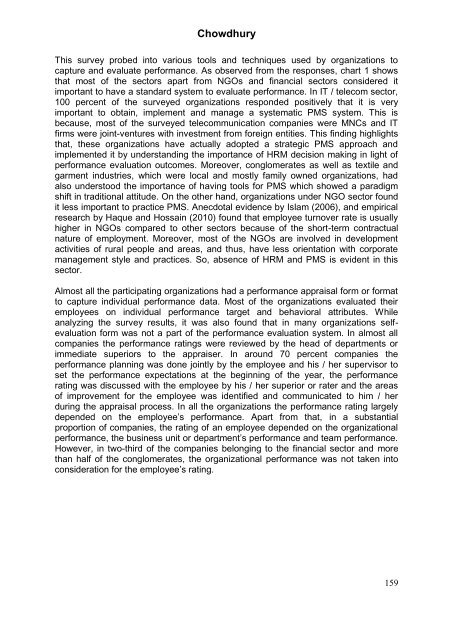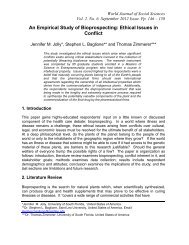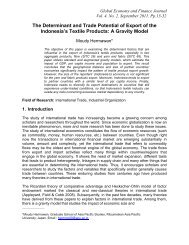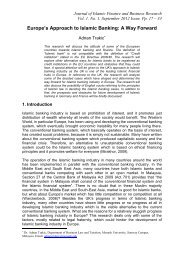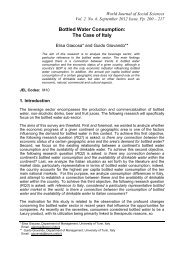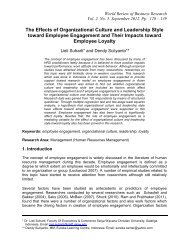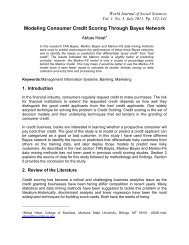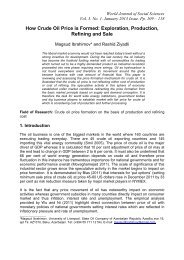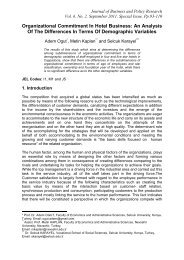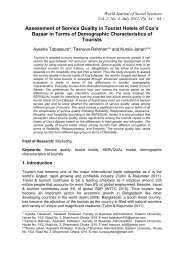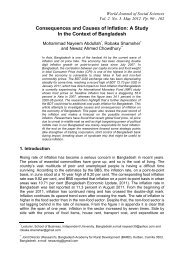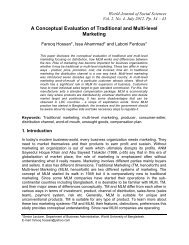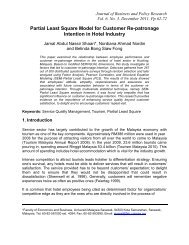Muhammad Faisol Chowdhury - Wbiaus.org
Muhammad Faisol Chowdhury - Wbiaus.org
Muhammad Faisol Chowdhury - Wbiaus.org
Create successful ePaper yourself
Turn your PDF publications into a flip-book with our unique Google optimized e-Paper software.
<strong>Chowdhury</strong>This survey probed into various tools and techniques used by <strong>org</strong>anizations tocapture and evaluate performance. As observed from the responses, chart 1 showsthat most of the sectors apart from NGOs and financial sectors considered itimportant to have a standard system to evaluate performance. In IT / telecom sector,100 percent of the surveyed <strong>org</strong>anizations responded positively that it is veryimportant to obtain, implement and manage a systematic PMS system. This isbecause, most of the surveyed telecommunication companies were MNCs and ITfirms were joint-ventures with investment from foreign entities. This finding highlightsthat, these <strong>org</strong>anizations have actually adopted a strategic PMS approach andimplemented it by understanding the importance of HRM decision making in light ofperformance evaluation outcomes. Moreover, conglomerates as well as textile andgarment industries, which were local and mostly family owned <strong>org</strong>anizations, hadalso understood the importance of having tools for PMS which showed a paradigmshift in traditional attitude. On the other hand, <strong>org</strong>anizations under NGO sector foundit less important to practice PMS. Anecdotal evidence by Islam (2006), and empiricalresearch by Haque and Hossain (2010) found that employee turnover rate is usuallyhigher in NGOs compared to other sectors because of the short-term contractualnature of employment. Moreover, most of the NGOs are involved in developmentactivities of rural people and areas, and thus, have less orientation with corporatemanagement style and practices. So, absence of HRM and PMS is evident in thissector.Almost all the participating <strong>org</strong>anizations had a performance appraisal form or formatto capture individual performance data. Most of the <strong>org</strong>anizations evaluated theiremployees on individual performance target and behavioral attributes. Whileanalyzing the survey results, it was also found that in many <strong>org</strong>anizations selfevaluationform was not a part of the performance evaluation system. In almost allcompanies the performance ratings were reviewed by the head of departments orimmediate superiors to the appraiser. In around 70 percent companies theperformance planning was done jointly by the employee and his / her supervisor toset the performance expectations at the beginning of the year, the performancerating was discussed with the employee by his / her superior or rater and the areasof improvement for the employee was identified and communicated to him / herduring the appraisal process. In all the <strong>org</strong>anizations the performance rating largelydepended on the employee‟s performance. Apart from that, in a substantialproportion of companies, the rating of an employee depended on the <strong>org</strong>anizationalperformance, the business unit or department‟s performance and team performance.However, in two-third of the companies belonging to the financial sector and morethan half of the conglomerates, the <strong>org</strong>anizational performance was not taken intoconsideration for the employee‟s rating.159


